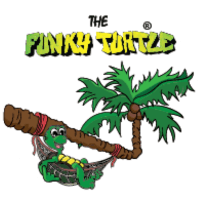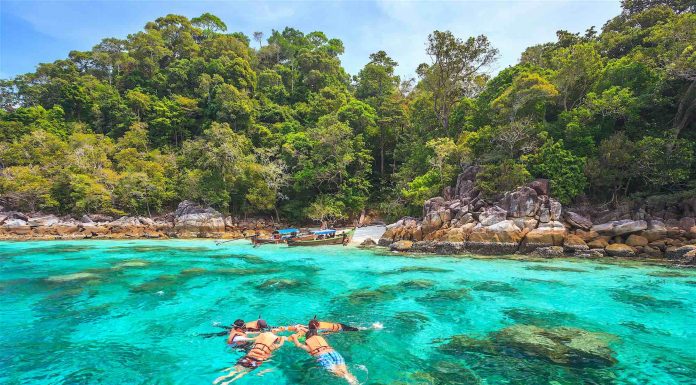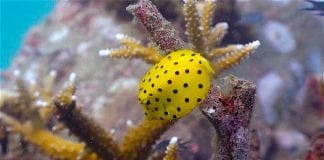Protecting Coral Reefs from Sunscreen
Corals are tiny, fragile animals that are related to jellyfish and anemones. Coral reefs are built by and made up of thousands of tiny animals; called polyps. A polyp is shaped like a plastic bag with the opening encircled by stinging tentacles.
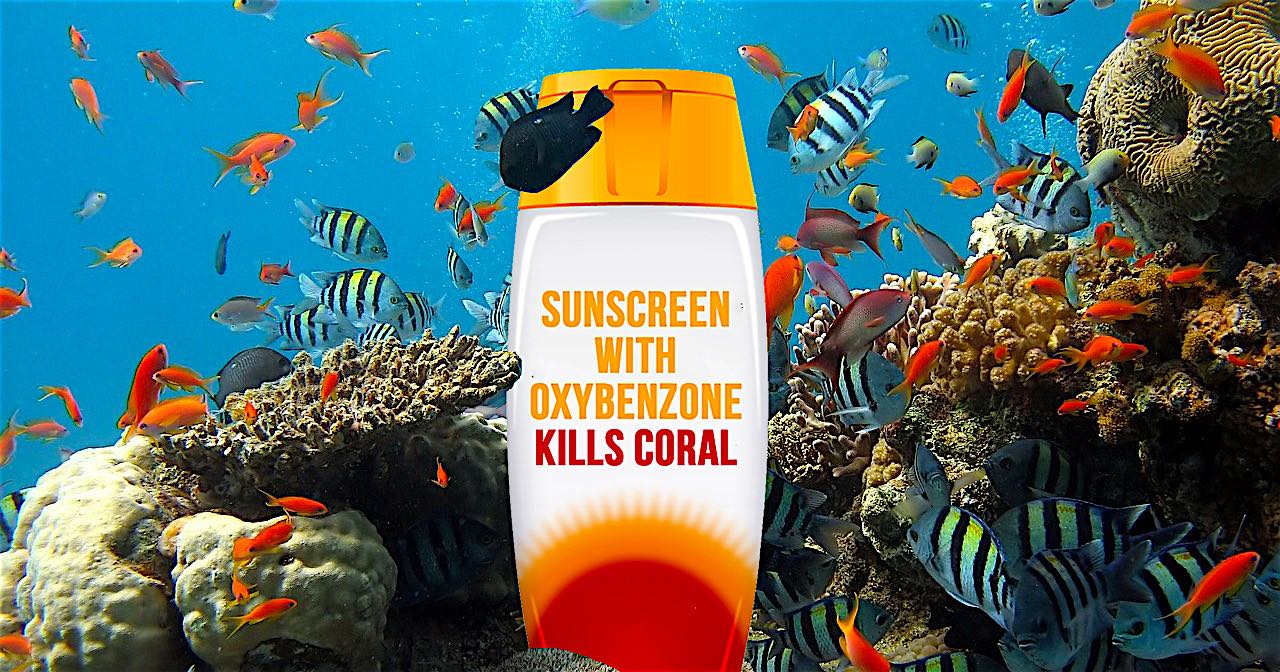
Protecting Coral Reefs
Polyps build a hard limestone skeleton from the ions in the seawater to form a cup shaped, calyx, within which the delicate polyp sits.
Corals live together with microscopic algae called zooxanthellae. These microscopic algae capture sunlight and convert it into energy, to provide essential nutrients to the corals.
Corals need to grow in shallow, clear water where their symbiotic algae, can photosynthesise.
Most corals have clear bodies and white skeletons, generally their beautiful colours come from their zooxanthellae.
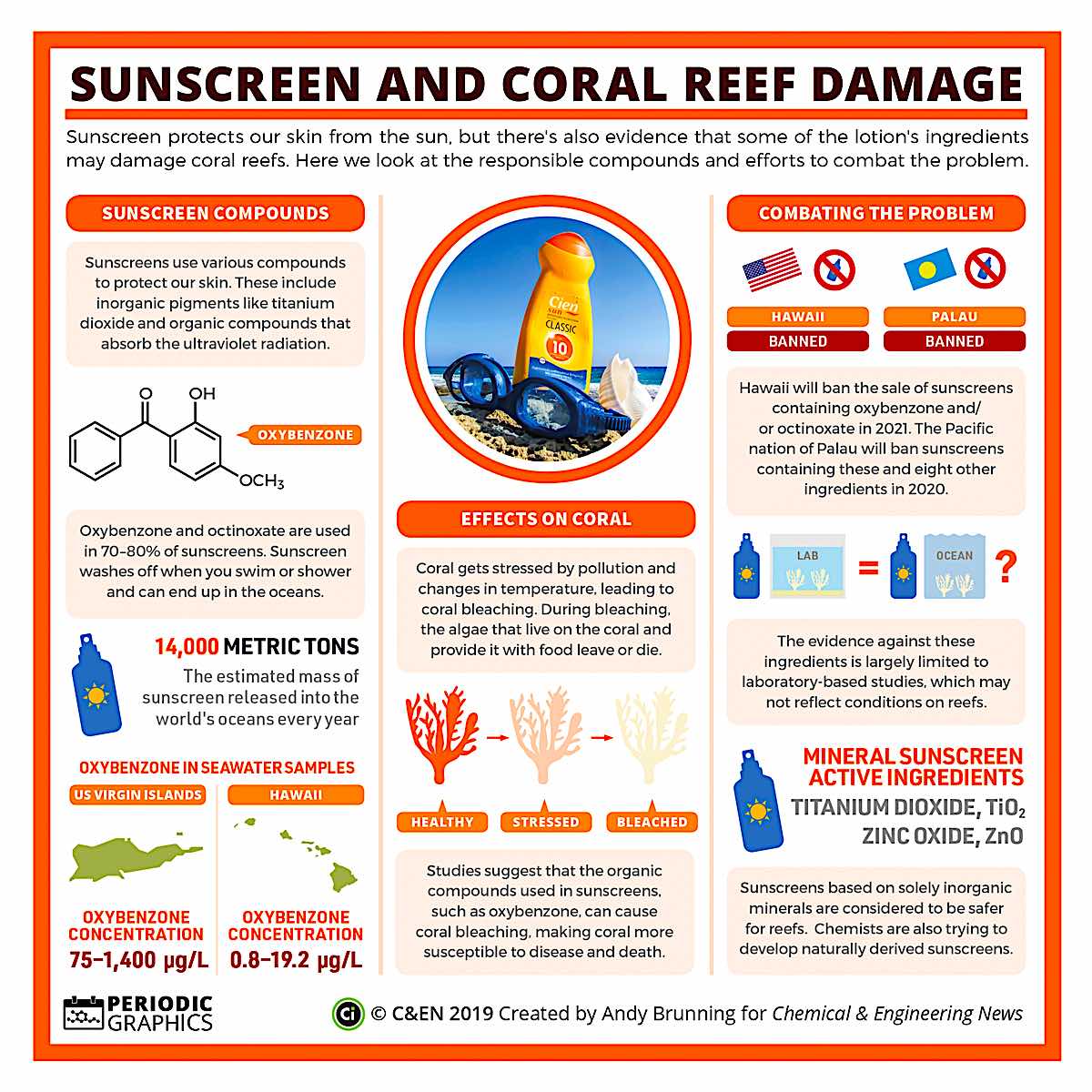
Why Sunscreen is bad for Coral Reefs
Sunscreens work by using either a physical mineral barrier or a complex chemical barrier so that ultra violet (UV) rays are not absorbed into the skin.
The problem is that sunscreen washes off in the water and settles on the surface of the ocean.
This oil slick of sunscreen prevents UV rays from penetrating the water and prevents the zooxanthellae from photosynthesising.
This causes the corals to become stressed and expel their algae, causing them to turn completely white, this is coral bleaching.
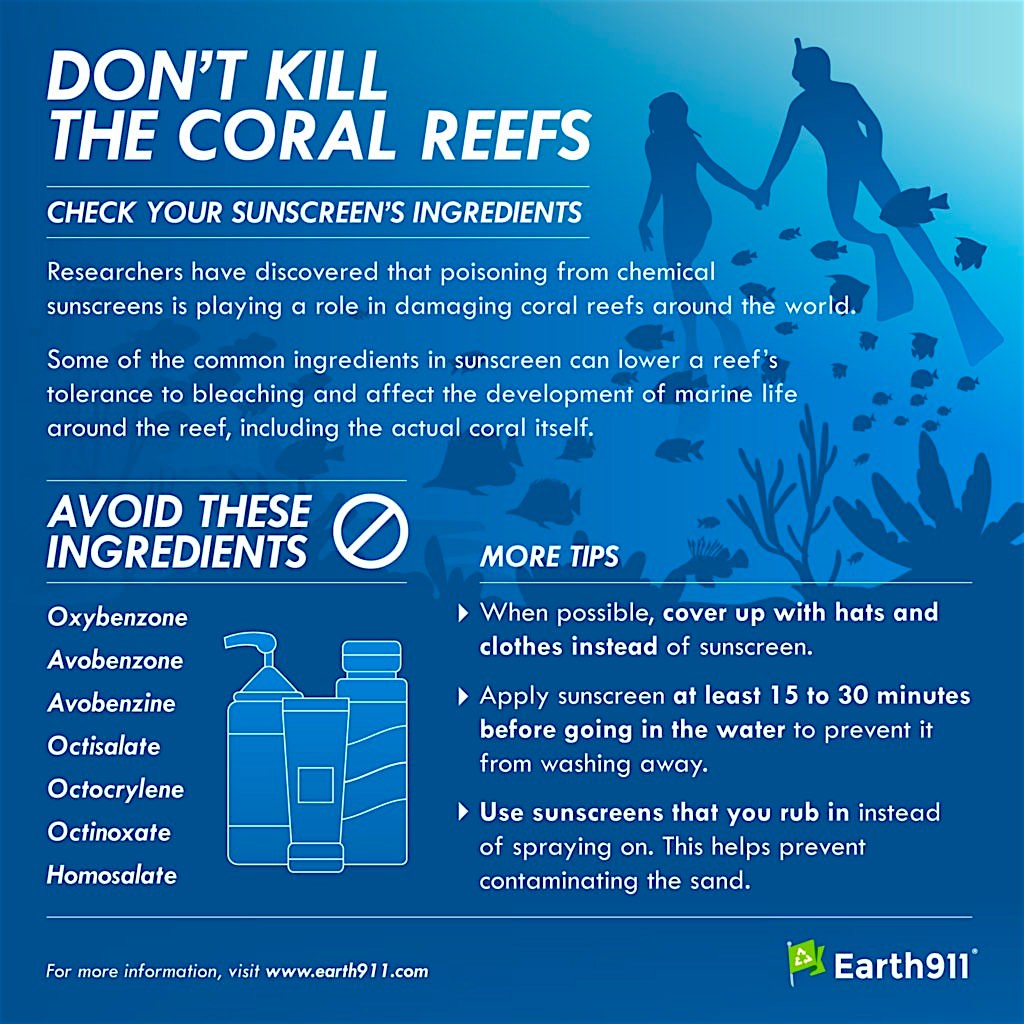
Sunscreen Studies
In a 2016 study, a team of international scientists found that a common chemical in many sunscreen lotions and cosmetics is highly toxic to juvenile corals and other marine life.
Oxybenzone (BP-3) is found in more than 3,500 skin care products to protect consumers from the sun’s harmful UV rays.
An estimated 14,000 tons of sunscreen is believed to be deposited in oceans annually, with the greatest damage found in popular reef areas.
There are some reef dependent destinations, such as Hawaii and Palau, who have legislated bans on certain chemicals found in sunscreens. These changes begin to take effect next year.
Even if you don’t swim after applying your sunscreen, it ends up in our oceans in other ways. Aerosol versions can spray large amounts of sunscreen on the sand, where it gets washed into our oceans.
After your day at the beach, you go home and hop in the shower, this used shower water now tainted with sunscreen has also been found in the marine environment.
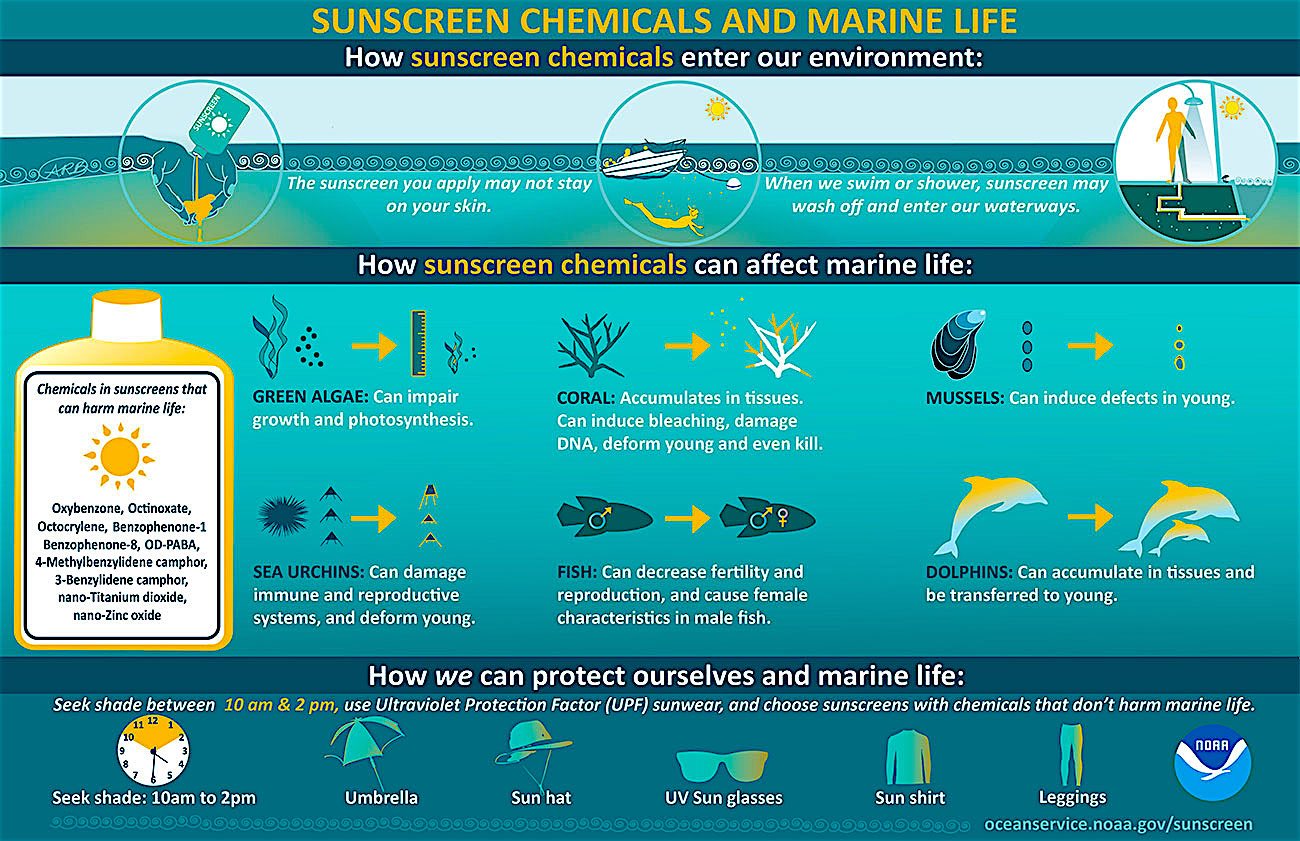
Safe Sunscreen and Koh Tao
How to enjoy the sun without damaging coral reefs
- Plan your day around the sun, avoid peak hours. Generally the sun is the hottest from 10 am to 2pm. Plan other activities during the hottest spike from 12 pm to 2 pm.
- This is a great time to see what else Koh Tao offers; chill at one of our lovely beach side restaurants, get a traditional Thai massage or take a Thai cooking class.
- Sign up to go scuba diving! Spend the hottest part of the day underwater. Take precautions against the sun by sitting in the shade and do not apply sunscreen before entering the water.
- Wear protective clothing. Long sleeve, breathable and light weight fabric is a great way to protect your skin from the sun. Use wide brimmed hats and UV sunglasses to protect your eyes.
- When snorkeling or swimming wear a rash guard for protection. Many rash guards have UPF ratings of 50 or higher. Investing in the right clothing can reduce your need for sun protection products and it will last longer than a bottle of sunscreen!
- Chill out in the shade. Use umbrellas and sit under trees.
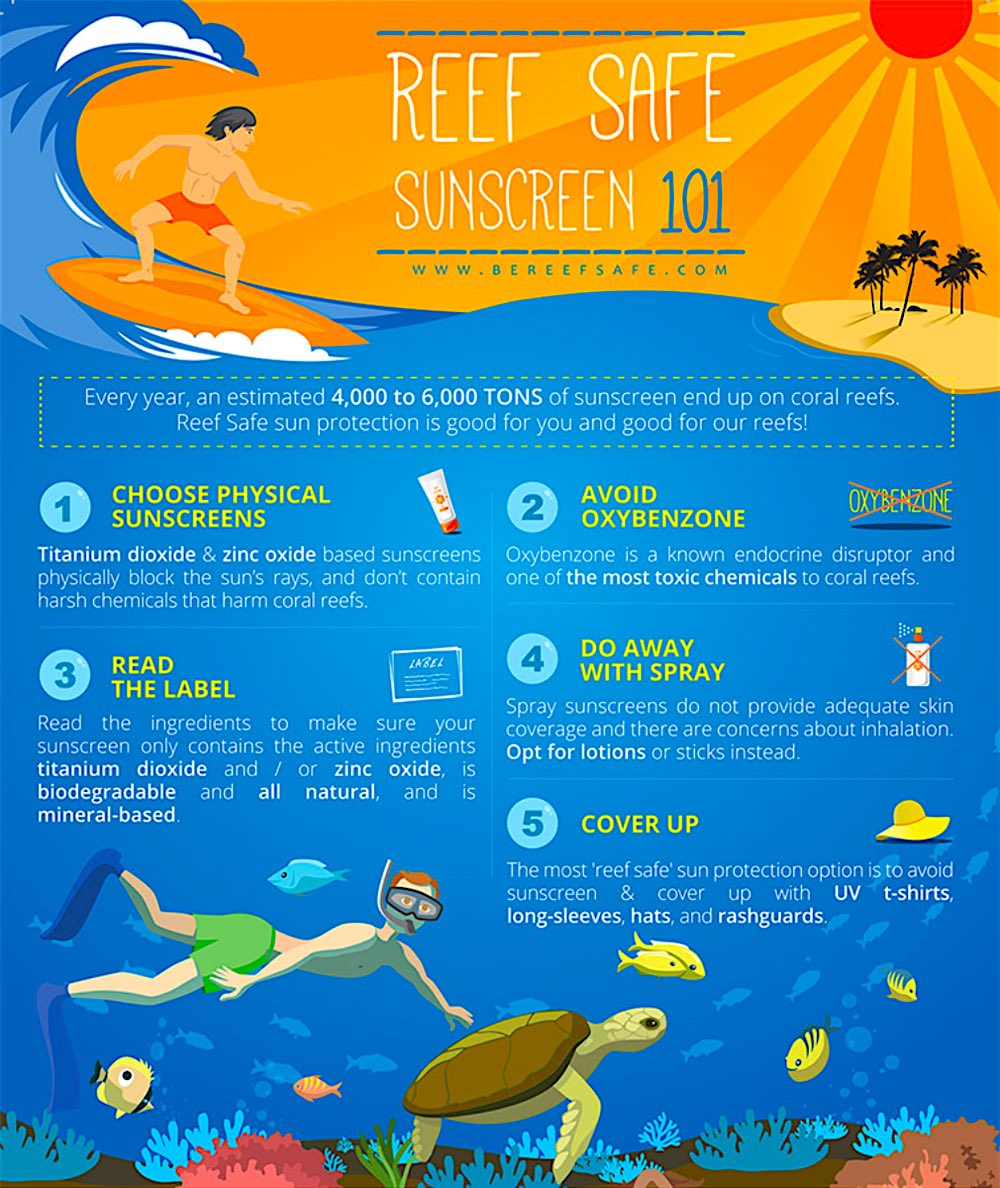
If using a sunscreen is unavoidable
- Choose mineral based sunblocks that use “non-nano” zinc oxide or titanium dioxide.
- Choose reef safe sunscreens, without the ingredient oxybenzone and octinoxate.
- Choose non-aerosol applications and apply sunscreen an hour before you expect to be in the sun.
Reef repair is a reef safe sunscreen that is made in Thailand and widely available for visitors to Koh Tao.
Thanks to the following for the excellent charts highlighting the effects of sunscreen on our reefs and some great alternatives.
- NOAA Ocean Service
- Andy Brunning for Chemical & Engineering News
- Earth911
- Bereefsafe
Frequently Asked Questions
What sunscreen is safe for coral reefs?
When choosing a sunscreen avoid any products that contain the chemicals oxybenzone and octinoxate, both of which are harmful to corals. More and more sunscreen brands are producing reef friendly products including Rereef a mineral based sunscreen produced in Thailand, Badger, a mineral based and organic certified sunscreen manufactured in the US, SafeSea, an organic formula with jellyfish sting protection made in Israel and ‘Reef Repair’ reef safe sunscreen also made in Thailand.
How does sunscreen affect coral reefs?
Chemicals contained in some sunscreens such as oxybenzone and octinoxate wash off your body when you are swimming. Once these chemicals are in the water they affect the ability of corals to defend against bleaching, damaging their development and can actually kill corals.
What chemicals in sunscreen are bad for reefs?
Both oxybenzone and octinoxate are bad for coral reefs along with a number of other chemicals including Avobenzone.
How does sunscreen bleach coral reefs?
Chemicals such as oxybenzone that are in some sunscreens are absorbed by the corals when the sunscreen washes off your body. Oxybenzone contains nanoparticles that disrupt the reproduction of coral and their growth sequence and can lead to coral bleaching.
Should I put on sunscreen in the water?
Apply the 30 minutes rule. Always apply sunscreen 30 minutes before any sun exposure, not just 30 minutes before you get in the water.
